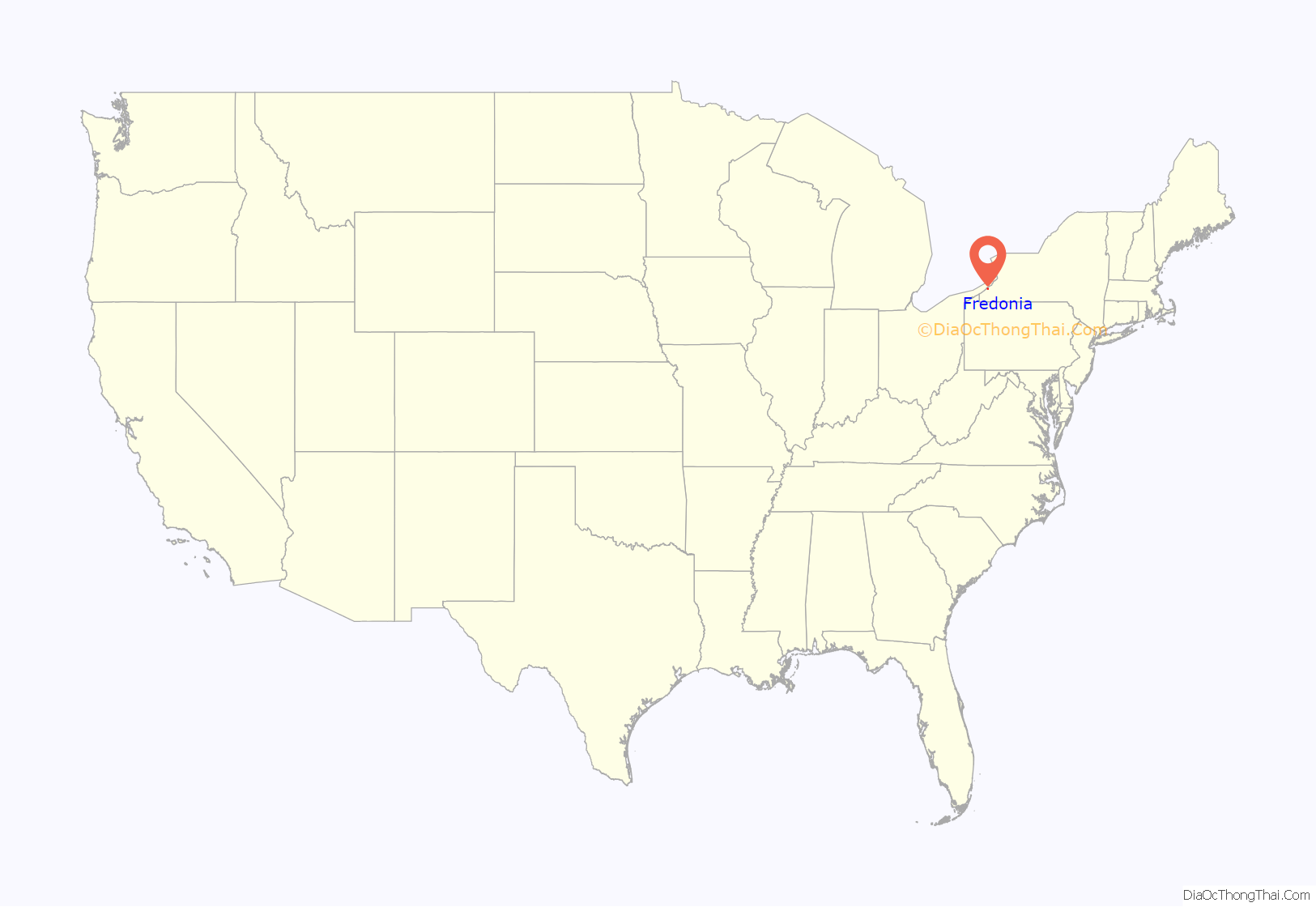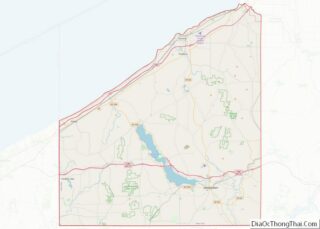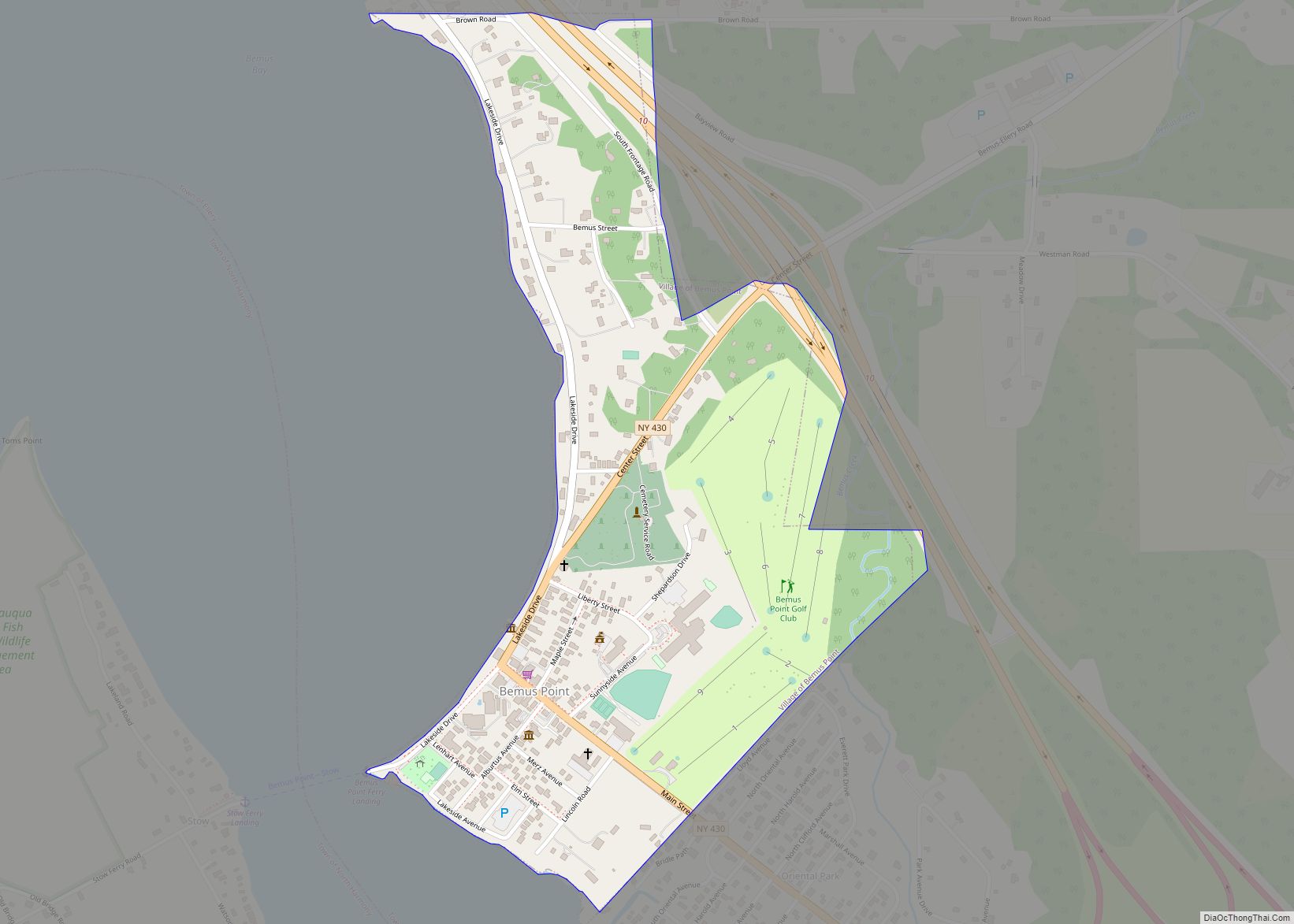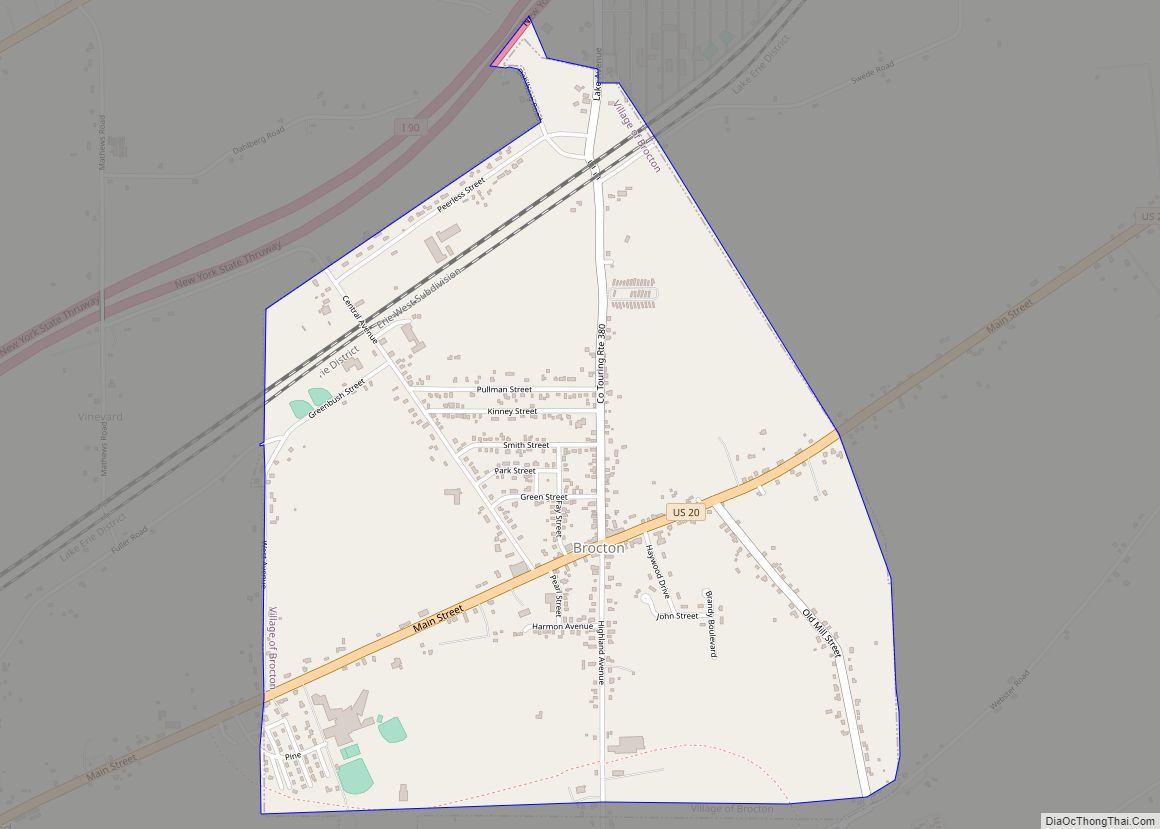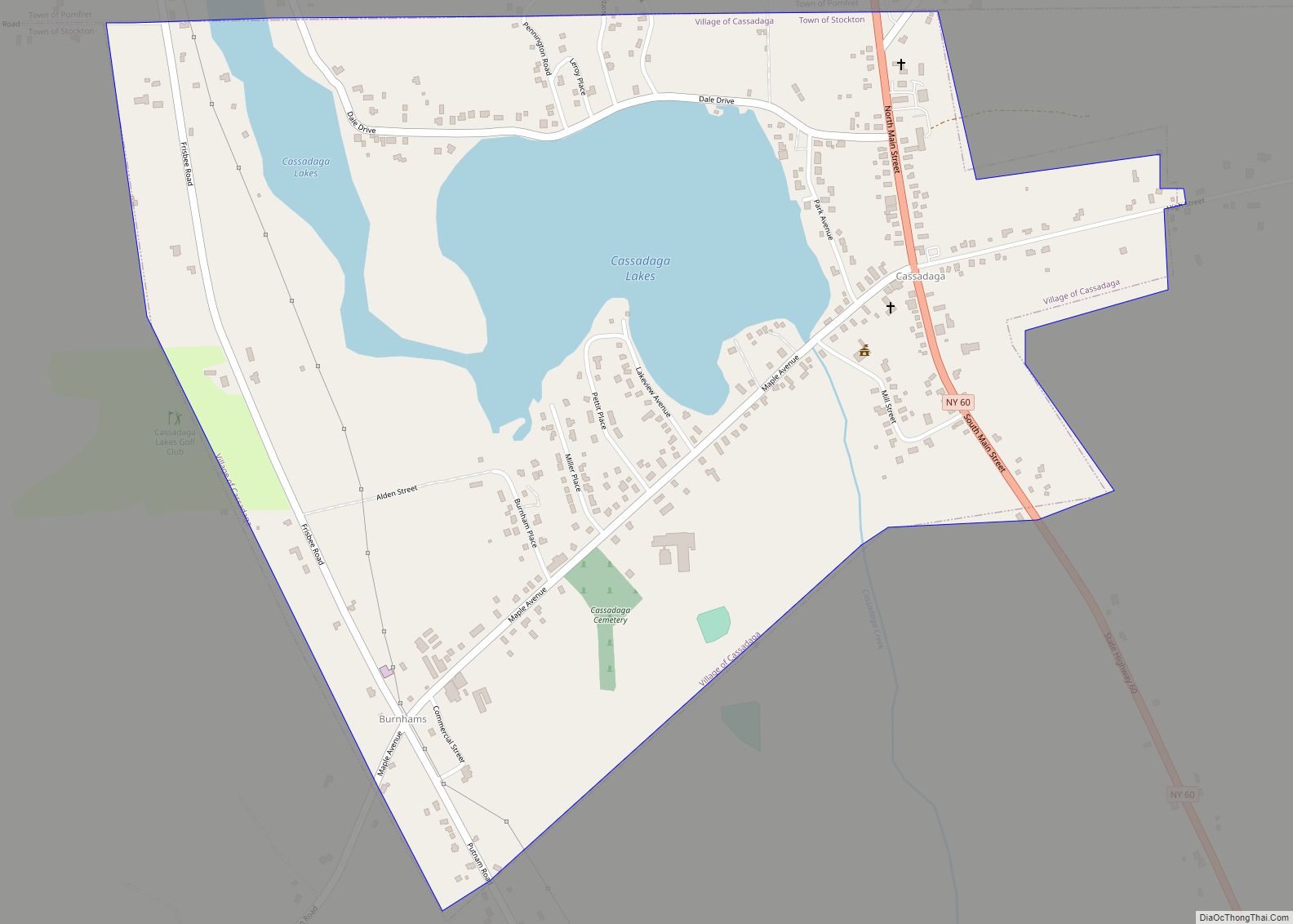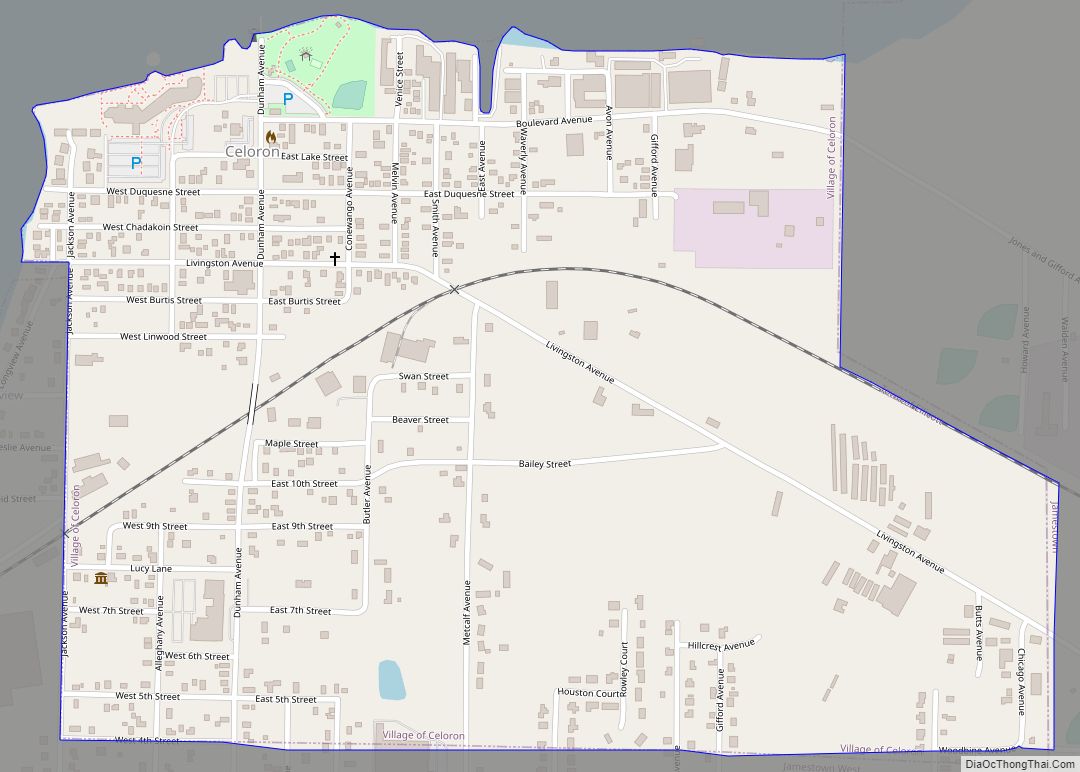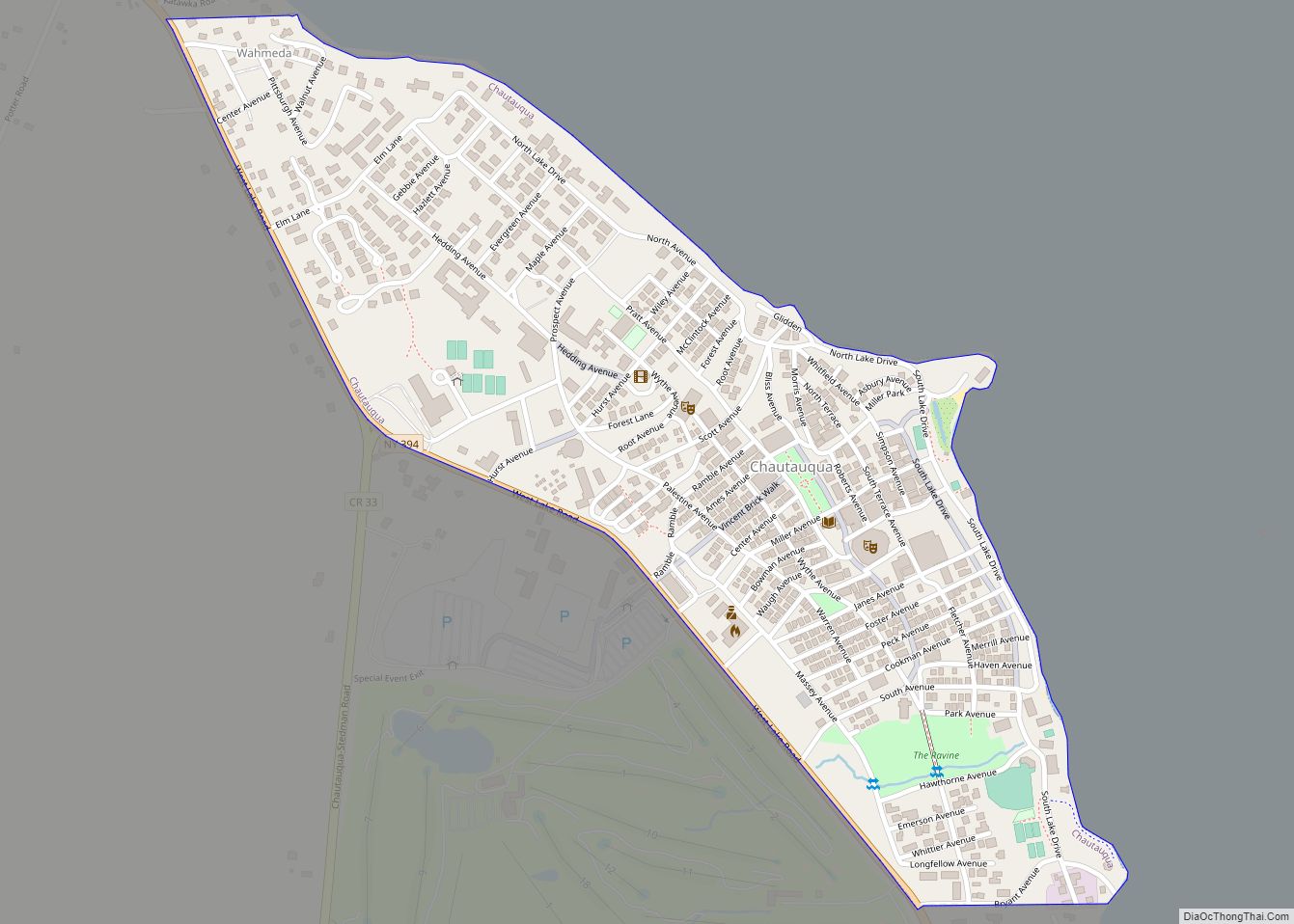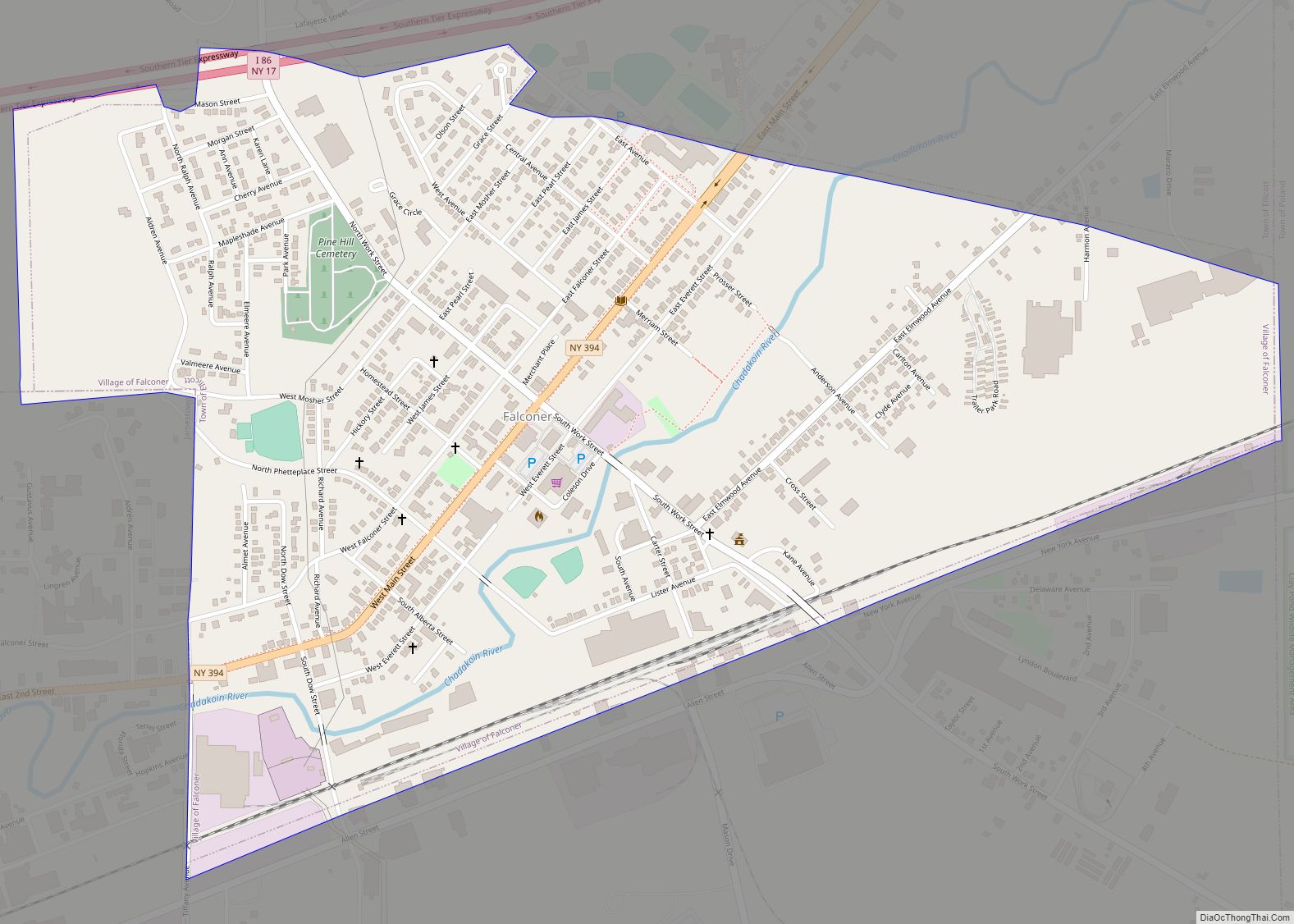Fredonia is a village in Chautauqua County, New York, United States. The population was 9,871 as of the 2020 census. Fredonia is in the town of Pomfret south of Lake Erie. The village is the home of the State University of New York at Fredonia (in the northwest part of the village).
Fredonia is one of only twelve villages in New York still incorporated under a charter, the other villages having incorporated or re-incorporated under the provisions of Village Law.
| Name: | Fredonia village |
|---|---|
| LSAD Code: | 47 |
| LSAD Description: | village (suffix) |
| State: | New York |
| County: | Chautauqua County |
| Elevation: | 722 ft (220 m) |
| Total Area: | 5.14 sq mi (13.30 km²) |
| Land Area: | 5.14 sq mi (13.30 km²) |
| Water Area: | 0.00 sq mi (0.00 km²) |
| Total Population: | 9,585 |
| Population Density: | 1,865.88/sq mi (720.46/km²) |
| ZIP code: | 14063 |
| Area code: | 716 |
| FIPS code: | 3627419 |
| GNISfeature ID: | 0950652 |
| Website: | www.villageoffredoniany.com |
Online Interactive Map
Click on ![]() to view map in "full screen" mode.
to view map in "full screen" mode.
Fredonia location map. Where is Fredonia village?
History
The village that is now Fredonia was most likely first occupied by early Mound Builders, then the Erie people (13th to 17th centuries), then the Iroquois (specifically, the Seneca). In 1791, Robert Morris purchased the Fredonia land from Massachusetts and sold it to the Holland Land Company. Parcels were sold to pioneers around 1800, and the first settlers came around 1803 or 1804. Among the first settlers included Zattu Cushing, the county’s first judge, and David Eason, the county’s first sheriff.
In 1825, William Hart dug the first well specifically to produce natural gas in the United States on the banks of Canadaway Creek in Fredonia. It was 27 feet (8.2 m) deep, excavated with shovels by hand, and its gas pipeline was hollowed out logs sealed with tar and rags. It supplied enough natural gas for lights in two stores, two shops and a gristmill (currently the village’s fire station) by 1825. Expanding on Hart’s work, the Fredonia Gas Light Company was formed in 1858, becoming the first American natural gas company. A stone monument in downtown Fredonia marks the site of the first gas well.
The village of Fredonia was incorporated in 1829. The area’s original name was Canadaway (from the Indian word Ganadawao, meaning “among the hemlocks”). The name “Fredonia” was coined by Samuel Latham Mitchill, coupling the English word “freedom” with a Latin ending. Mitchill proposed it as a replacement name for the United States. It failed in that regard, but became the name of many towns and cities.
Established within 20 years of the founding of Fredonia, the Fredonia Academy was the first higher educational institution in Chautauqua County. It was started in 1824 and opened in 1826. The academy became a State Normal School in 1866. On August 8, 1867, the cornerstone of the Fredonia Normal School was laid on a site where the Old Main building stands today. The Normal School used the academy’s building, which stood on the site of the present village hall, until the Old Normal was completed in 1868. The Fredonia Normal School is now One Temple Square and Association, a 91-unit, NY HUD housing project for the disabled and the elderly that was started by Henry F. Sysol, Jr. in the late 1970s. Thereafter the academy building was used for some time as fire department headquarters.
Today the building houses the village offices and includes the 1891 Fredonia Opera House, a former vaudeville theater that fell into disrepair in the 1970s while being operated as a movie house. The theater underwent a complete nine-year restoration in the 1980s by the Fredonia Preservation Society and a cadre of volunteers. It now serves as a year-round performing arts center. In 1930 under the director of the Normal School, Hermann Cooper, 58 acres (230,000 m) of land west of Central Avenue were bought with the dream that one day it would become a campus. The construction of a music building took place in 1939, and in 1942 the Feinberg Law converted the Normal School into a teachers college. In 1948 the college became a vital part of the new State University of New York (SUNY) system.
In the mid-19th century Fredonia became the home of the first dues-paying Grange. The United States’ first Grange Hall was erected in Fredonia in 1868, and the original building (Grange Hall #1) still stands on Main Street. Fredonia was also host to the first meeting of the Woman’s Christian Temperance Union, which was held at the Fredonia Baptist Church in 1873.
Italian Immigration
Beginning in the late 1880s, Fredonia began seeing a large number of Sicilian immigrants from Valledolmo, Sicily. Subsequent the unification of the Kingdom of Italy many immigrants moved to the lush grape growing region to have a better life and seeking the ability to purchase land their ancestors were denied for centuries by the despotic Bourbon Kings of Sicily. You can still see the impact these immigrants made in growth of the town. Most predominantly, Saint Anthony of Padua Roman Catholic Church, originally San Antonio’s, named after the patron saint of Valledolmo, Italy. You can also see the strong Italian influence in the arts, music and culinary traditions which remain similar to foods and traditions back in Italy.
During the Olympic torch’s trip in the 1996 Atlanta Summer Games, sixth-grade teacher Kate Leary from Fredonia Middle School carried the torch as it went through the town on U.S. Route 20.
The Fredonia State campus was the location of training camps for two major professional sports teams: the Buffalo Bills of the NFL, and the Buffalo Braves of the NBA. The Braves relocated to San Diego (as the renamed San Diego Clippers) in 1978, and the Bills moved their training camp in 2000 to St. John Fisher College near Rochester, New York.
Samuel L. Clemens, better known as Mark Twain, had connections to Fredonia, via relatives.
The Fredonia Commons Historic District was listed on the National Register of Historic Places in 1978. The U.S. Post Office was listed in 1988.
On January 28, 2020, Fredonia was named the winner of the 2020 Small Business Revolution reality show, which aired on Hulu and Amazon Prime. The show began filming in March, 2020 just before the Covid-19 pandemic was declared.
Fredonia Road Map
Fredonia city Satellite Map
Geography
Fredonia is located at 42°26′27″N 79°20′02″W / 42.440845°N 79.333813°W / 42.440845; -79.333813 in the northern part of the town of Pomfret. It is bordered to the north by the town and city of Dunkirk.
According to the United States Census Bureau, the village has a total area of 5.2 square miles (13.4 km), all of it land, though it does have a small stream flowing northward through the village to Lake Erie called Canadaway Creek.
U.S. Route 20 passes through the village. Exit 59 on the New York State Thruway, which passes north of the village, serves both Fredonia and Dunkirk by way of New York State Route 60.
Notes:
- ^ Climatological records maintained at the Fredonia COOP (42°26′59″N 79°18′43″W / 42.4496°N 79.3119°W / 42.4496; -79.3119) from January 1914 to August 2011, and at the Portland 1 SW COOP (42°22′18″N 79°29′12″W / 42.3717°N 79.4866°W / 42.3717; -79.4866) since September 2011.
See also
Map of New York State and its subdivision:- Albany
- Allegany
- Bronx
- Broome
- Cattaraugus
- Cayuga
- Chautauqua
- Chemung
- Chenango
- Clinton
- Columbia
- Cortland
- Delaware
- Dutchess
- Erie
- Essex
- Franklin
- Fulton
- Genesee
- Greene
- Hamilton
- Herkimer
- Jefferson
- Kings
- Lake Ontario
- Lewis
- Livingston
- Madison
- Monroe
- Montgomery
- Nassau
- New York
- Niagara
- Oneida
- Onondaga
- Ontario
- Orange
- Orleans
- Oswego
- Otsego
- Putnam
- Queens
- Rensselaer
- Richmond
- Rockland
- Saint Lawrence
- Saratoga
- Schenectady
- Schoharie
- Schuyler
- Seneca
- Steuben
- Suffolk
- Sullivan
- Tioga
- Tompkins
- Ulster
- Warren
- Washington
- Wayne
- Westchester
- Wyoming
- Yates
- Alabama
- Alaska
- Arizona
- Arkansas
- California
- Colorado
- Connecticut
- Delaware
- District of Columbia
- Florida
- Georgia
- Hawaii
- Idaho
- Illinois
- Indiana
- Iowa
- Kansas
- Kentucky
- Louisiana
- Maine
- Maryland
- Massachusetts
- Michigan
- Minnesota
- Mississippi
- Missouri
- Montana
- Nebraska
- Nevada
- New Hampshire
- New Jersey
- New Mexico
- New York
- North Carolina
- North Dakota
- Ohio
- Oklahoma
- Oregon
- Pennsylvania
- Rhode Island
- South Carolina
- South Dakota
- Tennessee
- Texas
- Utah
- Vermont
- Virginia
- Washington
- West Virginia
- Wisconsin
- Wyoming
